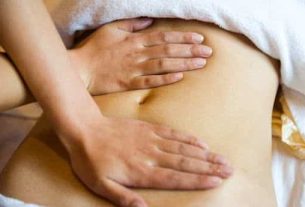Phenylketonuria is a rare genetic disease characterized by the presence of a mutation responsible for altering the function of an enzyme in the body responsible for converting the amino acid phenylalanine into tyrosine, which leads to the accumulation of phenylalanine in the blood, which in large concentrations is toxic to the body, which can cause intellectual disability and seizures, for example.
This genetic disease has an autosomal recessive nature, that is, for a child to be born with this mutation, both parents must be at least carriers of the mutation.
There is no cure for phenylketonuria, however it is treated through diet, and it is necessary to avoid consuming foods rich in phenylalanine, such as cheese, eggs, milk and meat, for example.

Main symptoms
The main symptoms of phenylketonuria are:
- Skin sores similar to eczema;
- Unpleasant odor, characteristic of the accumulation of phenylalanine in the blood;
- Nausea and vomiting;
- Aggressive behavior;
- Hyperactivity;
- Mental retardation, generally severe and irreversible;
- Seizures;
- Behavioral and social problems.
It is important that a person with phenylketonuria is regularly monitored by a pediatrician and nutritionist since breastfeeding so that there are no very serious complications and the child’s development is not compromised.
Cause of phenylketonuria
Phenylketonuria is caused by mutations in a gene capable of altering the function of the enzyme phenylalanine hydroxylase, or PAH, which is responsible for converting the amino acid phenylalanine into tyrosine, which is involved in several processes in the body. Thus, due to the change in the activity of the enzyme, phenylalanine accumulates in the body, which causes damage to the body, especially the nervous system.
Phenylketonuria is a genetic disease passed from parents to children, so for the child to have the disease, they must have both genes for the disease, that is, the parents must have the disease or be carriers of the gene. responsible for phenylketonuria.
How the diagnosis is made
The diagnosis of phenylketonuria is made shortly after birth through the heel prick test, which must be carried out between the first 48 and 72 hours of the baby’s life. Find out which diseases are identified by the heel prick test.
Children who have not been diagnosed through the heel prick test may have the diagnosis made through laboratory tests whose objective is to assess the amount of phenylalanine in the blood and, in the case of a very high concentration, a genetic test can be carried out to identify the disease-related mutation.
Once the mutation and the concentration of phenylalanine in the blood are identified, the doctor can check the stage of the disease and the likelihood of complications. Furthermore, this information is important for the nutritionist to indicate the most appropriate eating plan for the person’s condition.
It is important that phenylalanine levels in the blood are measured regularly. In the case of babies, it is important that it is done every week until the baby turns 1 year old, while for children between 2 and 6 years old the exam should be carried out every fortnight and for children from 7 years old, monthly.
How the treatment is carried out
The main objective of treating phenylketonuria is to reduce the amount of phenylalanine in the blood and, therefore, it is usually recommended to follow a diet low in foods that contain phenylalanine, such as foods of animal origin, such as:
- Foods of animal origin: meat, milk and dairy products, eggs, fish, shellfish, and meat derivatives, such as sausage, bacon, ham.
- Foods of plant origin: wheat, soy and derivatives, chickpeas, beans, peas, lentils, chestnuts, peanuts, walnuts, almonds, hazelnuts, pistachios, pine nuts;
- Sweeteners with aspartame;
- Products that contain prohibited foods as an ingredientsuch as cakes, cookies, ice cream and bread.
Fruits and vegetables can be consumed by phenylketonurics, as can sugars and fats. It is also possible to find several special products on the market made for this audience, such as rice, pasta and cookies, and there are several recipes that can be used to produce foods with a low phenylalanine content.
It is important that these changes in diet are guided by a nutritionist, because it may be necessary to supplement some vitamins or minerals that cannot be obtained from a normal diet. See what food should be like in case of phenylketonuria.
Is there a cure for phenylketonuria?
There is no cure for phenylketonuria and, therefore, treatment involves only controlling your diet.
The damage and intellectual impairment that can occur with the consumption of foods rich in phenylalanine is irreversible in people who do not have the enzyme or have an enzyme that is unstable or inefficient when it comes to converting phenylalanine into tyrosine. This damage, however, can be easily avoided through diet.
Phenylketonuria and pregnancy
Women with phenylketonuria and who wish to become pregnant should receive guidance from their obstetrician and nutritionist regarding the risks of increasing the concentration of phenylalanine in the blood. Therefore, it is important that it be evaluated by a doctor periodically, in addition to following a diet suitable for the disease and, probably, supplementing with some nutrients so that both mother and child stay healthy.
It is also recommended that a baby with phenylketonuria be monitored regularly throughout their life to avoid complications, such as impairment of the nervous system, for example.
How to safely give breast milk
Although the recommendation is to exclude breast milk from the baby’s diet, using only pharmacy milk without phenylalanine, it is still possible to breastfeed the baby with phenylketonuria, however, this requires:
- Carry out a blood test on the baby every week to check the levels of phenylalanine in the blood;
- Calculate the amount of breast milk to give to the baby, according to the phenylalanine values in the baby’s blood and according to the pediatrician’s guidance;
- Calculate the amount of pharmacy milk without phenylalanine to complete the baby’s diet;
- Using the pump, remove the right amount of breast milk that the mother can give to the baby;
- Use the bottle or relactation technique to feed the baby.
It is essential to exclude the amino acid phenylalanine from the diet, so that the baby does not have problems with physical and mental development, such as mental retardation.
Nutritional supplements
As the diet of a person with phenylketonuria is quite restricted, it is possible that they do not have the amount of vitamins and minerals necessary for the proper functioning of the body and for the correct development of the child. Thus, the nutritionist can recommend the use of supplements and nutritional formulas to ensure the baby’s adequate growth and promote his health.
The supplementation to be used is recommended by the nutritionist according to the person’s age, weight and the baby’s digestion capacity, and must be maintained throughout life.
Possible complications of phenylketonuria
Complications of phenylketonuria arise when the diagnosis is not made early or when treatment is not followed in accordance with the pediatrician’s instructions, with an accumulation of phenylalanine in the blood, which can reach specific areas of the brain and lead to the development of permanent changes, such as :
- Delay in psychomotor development;
- Poor brain development;
- Microcephaly;
- Hyperactivity;
- Behavioral disorders;
- Decrease in IQ;
- Severe mental disability;
- Seizures;
- Tremors.
Over time, if the child is not properly treated, there may be difficulty sitting and walking, behavioral disorders and delays in speech and intellectual development, in addition to depression, epilepsy and ataxia, which is a loss of control. of voluntary movements.

Sign up for our newsletter and stay up to date with exclusive news
that can transform your routine!
Warning: Undefined array key "title" in /home/storelat/public_html/wp-content/plugins/link-whisper-premium/templates/frontend/related-posts.php on line 12
Warning: Undefined array key "title_tag" in /home/storelat/public_html/wp-content/plugins/link-whisper-premium/templates/frontend/related-posts.php on line 13



